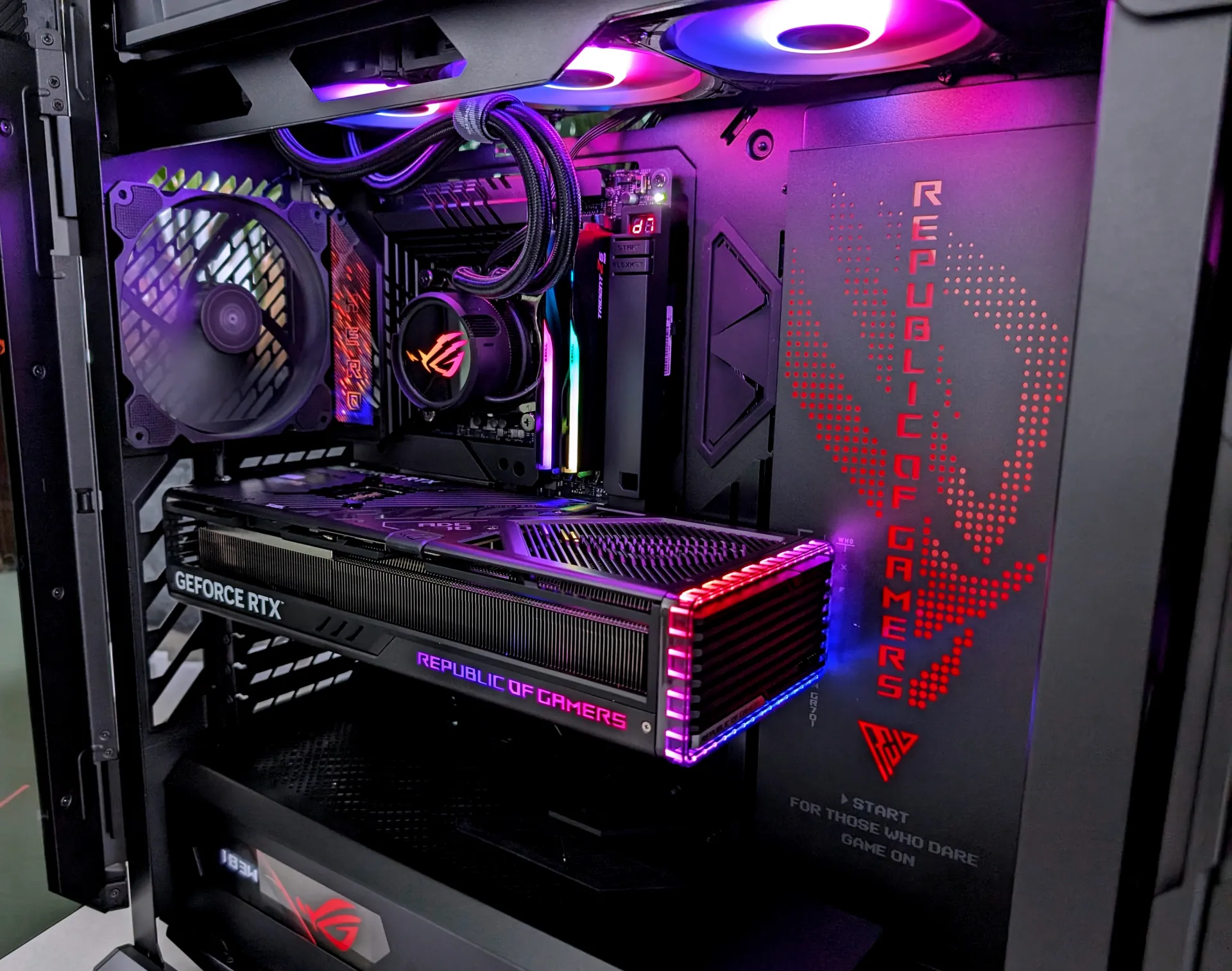Final Words & Conclusion
Aiming to assemble a cable-free front-side PC for the first time led to a much cleaner look and made the assembly process simpler. The idea of hiding cables isn't brand new. In fact, ASUS has been talking about it for a while. BTF moves all those messy cables and connectors you usually see on a motherboard to the back. This change makes everything look neater. ASUS didn't stop there; they also came up with a new way to connect graphics cards without those bulky power cables we're used to, using something called a PCIe-based connector. So far, there are a couple of high-end graphics cards, like the NVIDIA RTX 4090 ROG STRIX we used. ASUS is also planning to bring out a version of the RTX 4070 TI SUPER from their TUF Gaming lineup that uses their special PCIe connector. This isn't just for show; it's a big step forward in how PCs are built and might just be the way things are done in the future. If you're eyeing the BTF variant, be prepared to shell out over 100 euros more. This price bump is likely due to some extra bells and whistles or design touches that the BTF model brings to the table.
Now, for those who prefer AMD over Intel, you might find it interesting that ASUS' BTF series (currently) doesn't cater to AMD setups. This choice shows a clear leaning towards Intel configurations within this product line. Looking ahead, the Intel-focused lineup from ASUS will feature three main players: the Hero, the Z790 TUF, and the already available B760 TUF model. Speaking of the B760 TUF, it's worth noting that it initially missed out on including a dedicated slot for plugging in a power supply to the graphics card. This is a bit unusual since most modern gaming motherboards come equipped with this feature, underlining the importance of checking the specs carefully when choosing the right motherboard for your gaming rig.
The Verdict
The motherboards that work with this BTF setup are not only ready for the latest tech but are also well-made. This makes them a great option for anyone wanting to put together a top-notch gaming PC without having to worry about hiding a bunch of cables. But, going cable-free does cost a bit more. Based on early price comparisons, you might end up spending more money for a BTF-friendly motherboard and graphics cards. This brings up an important question: is the cleaner look and easier setup worth the extra money? People seem to have different opinions on this, and especially at this initial launch phase prices will be inflated. Some think the neatness and simplicity are worth the extra cost, while others would rather stick with a traditional setup where the cables are hidden but not gone, and spend their money on other parts of the PC. The move to introduce parts that fit with the BTF idea is a big deal for the world of PC building. It's all about making things simpler and neater, a kind of "War on Cables." It's still up in the air whether other companies will follow ASUS's lead or go in a different direction, like what MSI is doing with their Project Zero. I have to state the chassis we used worked well, but you'll probably require more cable room at that backside. This cable-free approach might be especially attractive to gamers and people who aren't really into the DIY side of building PCs, looking forward to the day when you can buy a complete system that's all BTF from the start. ASUS is hoping that more case makers will get on board with this idea over the next few months, giving builders and enthusiasts more options for creating a clean, cable-free PC setup. The end result is a very clean look, and as far as we are concerned, BTF probably should become a standard and the norm.
- Sign up to receive a notification when we publish a new article
- Or go back to Guru3D's front page.



